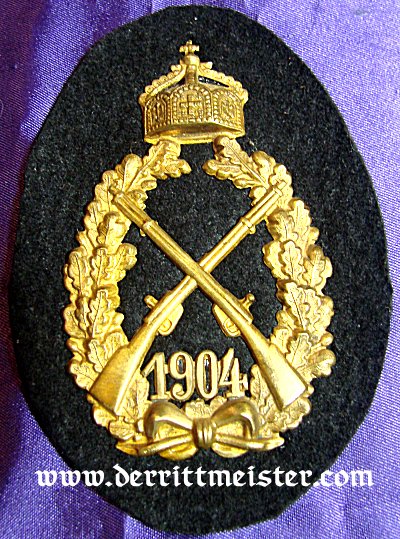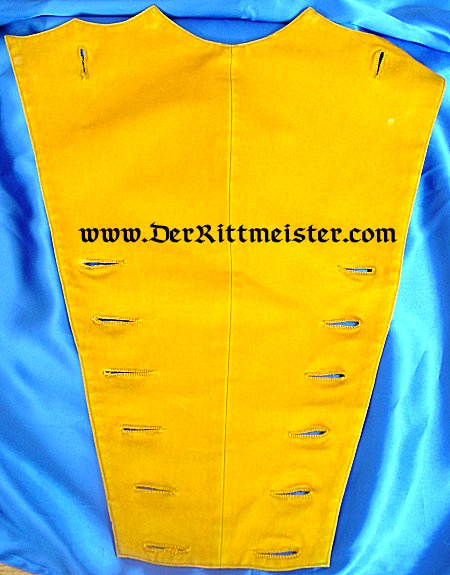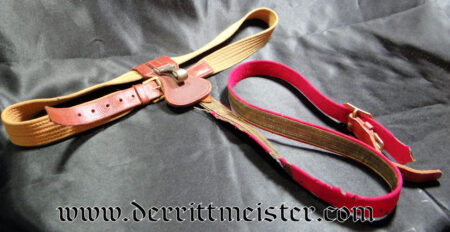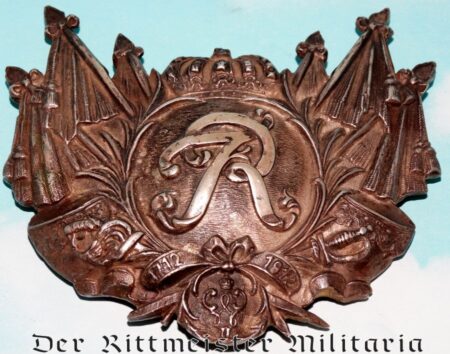Description
Annually, Kaiser Wilhelm II awarded a prize to the Infanterie Regiment with the best marksmanship. Each regiment member proudly displays it on his tunic sleeve. Today we are offering the prize from 1904. It is a brass badge measuring 4 1/2″ x 3.” It features a wreath topped by a Hohenzollern Crown. Below that are crossed rifles, with “1904” displayed at the wreath’s bottom. It is mounted on an oval-shaped piece of black wool, which would then be sewn onto a tunic sleeve. [I am a bit puzzled as to why the patch is black. Most Infanterie troops typically wore dark-blue uniforms, so a black patch would look odd. I do have a theory. Both the 2. Leib Husaren-Regiment Nr 2 and Braunschweig’s Husaren-Regiment Nr 17 wore black tunics. Perhaps one of these regiments received the award in 1904. This is just a guess on my part, but I do know the Army and Navy’s various units were eligible to participate in the competition]. The reverse reveals a backing plate has been added to the badge for extra strength and durability. Badges such as this were considered a great honor. German soldiers also were rewarded for their marksmanship with shooting lanyards. The latter were attached to their shoulder strap buttons and displayed on their right breasts.





